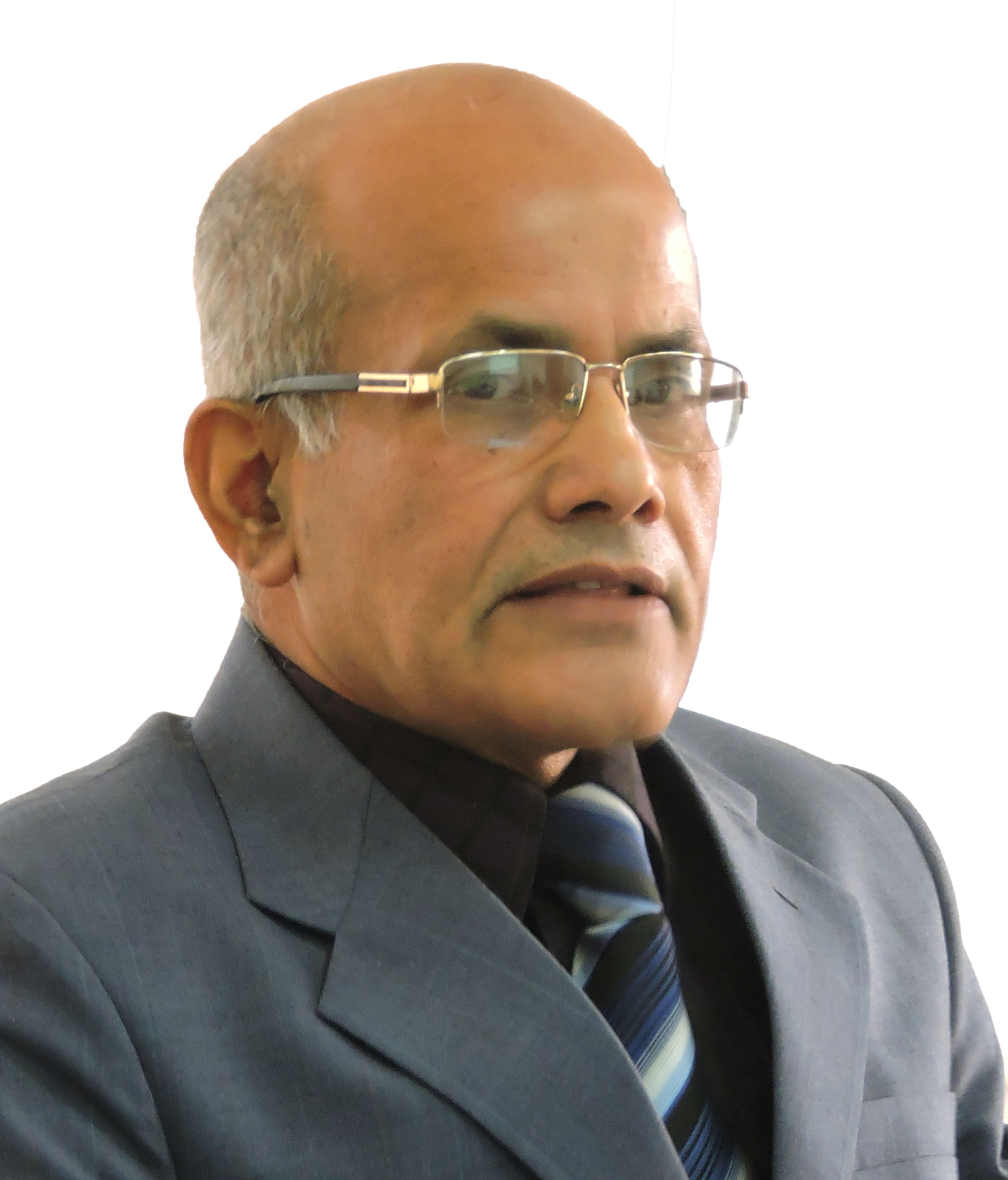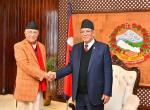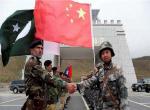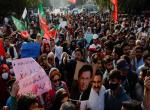Conflict does not end for all the time once it breaks up in a country. It happened so in Africa, Latin America, Asia and other parts of the world. Experience shows that conflict re-emerged in at least 40 per cent of the countries that at one or the other point of time were engulfed by conflict.
Though unfortunate, certain ominous symptoms of another conflict have already appeared in Nepal that was triggered by violent conflict between 1996 and 2006 and in which more than 18,000 innocent people were killed and there was huge loss of property. What would happen to the Himalayan country and in its neighbourhood, particularly in India, if another violent conflict arises? Time has come to ponder over this.
The violent conflict in Nepal had started in 1996 after the then Prime Minister of Nepal Sher Bahadur Deuba failed to meet 40-point demands of the Communist Party of Nepal (Maoist). Like in 1996, the Communist Party of Nepal (Maoist) with its leader Mohan Baidya (alias Kiran) submitted 70-point demand to the leader of Unified Communist Party of Nepal –Maoist (UCPN-Maoist) and Prime Minister of Nepal, Baburam Bhattari, on September 10, 2012. However, the difference in the situation in 1996 and 2012 is that Baburam Bhattarai submitted the 40-point demand to the government of Nepal as a rebel leader of Maoists. But now Bhattarai is Prime Minister and the 70-point demand was submitted to him by none other than his own colleagues of CPN (Maoist) who split from the mother party UCPN (Maoist) on June 19, 2012.
Strikingly, many of the demands covered in 40-point demand in 1996 resemble the 70-point demand in 2012 and this is more so when it comes to opposing deals with India. In their bid to lend a nationalist fervor to their demands, the Maoists in 2012 as in 1996 tried to raise different issues like the scrapping of all the “unequal” treaties and other deals with India. Towards this end, emphasis was laid on scrapping the 1950 Treaty of Peace and Friendship with India, which is virtually a security pact between the two countries. Besides, abrogation of Arms Treaty of 1965, Mahakali Treaty of 1996 and Bilateral Investment Protection and Promotion Agreement of 2011 with India has also been demanded. Other issues that have been covered in the demand include stricter control of the Nepal-India border, scrapping of contracts given to the Indian contractors such as to GMR and others for the construction of Karnli and Arun III hydropower projects, preventing the movement of vehicles with Indian number plates, and banning Indian Hindi movies as well as Indian music in Nepal.
The Mohan Baidya led Maoist party even threatened to take resort to violent means if their 70-point demands were not met. As the Bhattarai-led government in Nepal did not do anything about the 70-point demands as it cannot be done, the CPN (Maoist) in the first phase of their struggle declared ban on the movement of vehicles with Indian number plates in Nepal. Cinema halls across the country have been threatened not to show Hindi movies and play Hindi music. Argument has been placed that some of these measures were essential to give opportunity to the Nepalese industries to grow, which many of the intellectuals have questioned.
Of course, the Prime Minister of Nepal, Baburam Bhattarai, has given instruction to the security agencies to deal with the miscreants if at all they tried to stop the vehicles with Indian number plates because that could create shortage of basic essential goods in Nepal, including petroleum products and food items. But in reality, the Maoist call seems to have been working as most of the vehicles with Indian number plates have stopped plying on the roads in Nepal out of fear of attack. Even buses that used to bring Indian tourists to Nepal have been affected. On top of that, the cinema halls do not want to take the risk of showing Hindi movies and playing Indian music.
In the meantime, Nepal’s other political parties like the Nepali Congress, the Communist Party of Nepal (Unified Marxist-Leninist) and the Madheshi parties have opposed the 70-point demand of the CPN (Maoist). There is certain news of retaliation across the border in India when effort was made to stop the vehicles with Nepalese number plates. In Nepal itself, many people are dissatisfied with the move of CPN (Maoist) as they have started facing shortage of petroleum products and other essential items. Even the cinema viewers who like the Hindi movies and Indian music are disappointed. Most of the Nepalese media have also opposed the Maoist demands.
Notwithstanding the opposition, the CPN (Maoist) cadres are not in a mood to retreat from their 70-point demands. Media report s confirm that the CPN (Maoist) have among their cadres those elements who could not be accommodated within the mother UCPN (Maoist) led by Pushpa Kamal Dahal (alias Prachand). At a time when the political situation in the country is fragile and the law and order situation is fragile, efforts are being made by the party to bring to its fold those Maoist fighters who were discharged from the Maoist cantonments in 2012. Of the 19,000 plus Maoist fighters, more than 16,000 have already been discharged from the cantonments as they opted for voluntary retirement scheme. Now effort is being made to bring those people into the fold of the party. Besides, those thousands of Maoist workers who were disqualified in the cantonments in the initial stage for being child soldiers or on other grounds are also being mobilized. Consequently, the Maoists’ spirit is emboldened and the cases of forced donation, bandh and other such activities have started growing.
However, it is beyond comprehension as to how the Maoists, who took shelter in India for years during the conflict period, are targeting India. It was through the Indian intervention that the Maoists and the seven political parties of Nepal entered into 12-point agreement in New Delhi in 2005, which ensured safe return of the Maoists in Nepal. In a way, the 12-point agreement paved the way for the second People’s Movement in Nepal in 2006 and the emergence of the Maoists as the single largest party in the Constituent Assembly in 2008. It was then only that the monarchical institution of 239-long years was abolished and the Maoists were able to head the government in 2008-2009.
It is also difficult to understand as to why several Maoists want to maintain closer relation with China when the Chinese government provided even lethal weapons to Nepal to crush the Maoists during the time King Gyanendra ruled the country in 2005.
It appears that the CPN (Maoist) might try to take Nepal on the path of conflict again to serve their motto of capturing power, though such a move might prove disastrous to Nepal. They might do so with the help of the old fighters who were heavily indoctrinated during the conflict period in Nepal. Yet the ground reality does not favour the Maoists. Perhaps, many of such cadres might not return to the jungle and work as guerillas as they did in the past because they have been so much accustomed to the life of the cities and towns now. They have neither genuine support from the common mass of the Nepalese population nor do they have any international backing as such. Even the decade-long conflict made the people so much wary that they cannot that easily be diverted. They are in no mood for any conflict as they are disgusted with the selfish nature of the leaders. But this does not give room for complacency. In case the conflict of even low intensity breaks, of which there is some probability, it might not only have an impact within Nepal but also it might affect India most as being the closest neighbour and also due to the fact that there is an open border between the two countries. Therefore, before the situation goes out of control, all the Nepalese and other international stakeholders including India should see to it that peace and stability in Nepal is not disturbed. Conflict anywhere is threat to peace everywhere.
(The author is former Director, Centre For Economic and Technical Studies, Nepal)
Published Date: 29th August 2013, Image Source: http://static.ibnlive.in.com









Post new comment